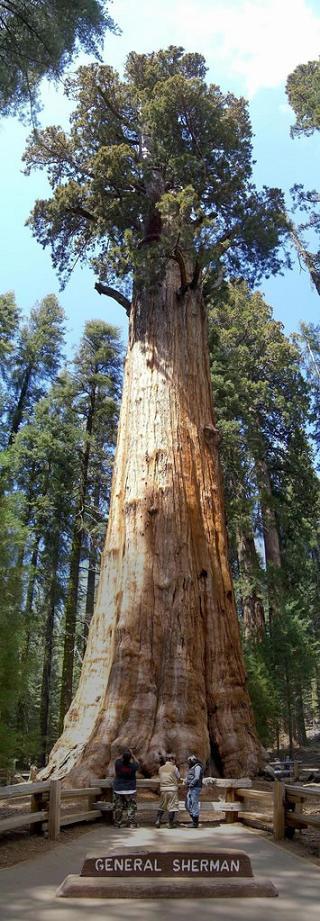| H o m e | |
|---|---|
| Sequoia, is a tree that ranks among the largest and oldest living things on Earth. Millions of years ago, these trees grew over most of the Northern Hemisphere. They now grow in only about 70 groves on the western slopes of the Sierra Nevada mountains of California, at elevations ranging from 5,000 to 8,000 feet (1,500 to 2,400 meters). The name sequoia comes from Sequoyah, the name of a Cherokee Indian leader who invented a written alphabet for his tribe. People also refer to the giant sequoia as the big tree or Sierra redwood.  Size. Giant sequoias do not grow as tall as coast redwoods. But their trunks are much larger. Several of these trunks measure about 100 feet (30 meters) around at the base. The diameter of the widest sequoia trunk, from a tree called the General Giant, measures 39 feet (11.4 meters). The world's largest tree in volume of wood is the General Sherman Tree, in Sequoia National Park in California. The tree stands 274 feet (83.5 meters) high, and the base of its trunk has a circumference of 103 feet (31.4 meters). People have estimated that the General Sherman Tree would yield 55,040 cubic feet (1,489 cubic meters) of lumber, enough to build a box that could contain the largest ocean liner. Age. Scientists can tell much about a sequoia's history and age by looking at the tree's growth rings. The tree adds a growth ring each year, forming a new layer of wood just inside the bark. The number of rings that make up the trunk show the tree's age. The thickness of those rings depends to some extent on seasonal weather conditions. Wide rings indicate that the growing season was good; narrow rings show that the season was poor. Cold and lack of rain may cause a poor growing season. 
Many giant sequoias exceed 2,000 years of age. It has been estimated that the General Sherman Tree is between 2,200 and 2,500 years old. Before a law was passed that protected sequoias from being cut, one of the oldest and largest of them was chopped down. When people counted the growth rings, they determined that this giant sequoia dated back to 1305 B.C. Thus the tree would exceed 3,300 years of age if still living today. The giant sequoias are extremely durable. None of these trees has been known to die from old age, disease, or insect attack. Their thick bark protects them from injury by fire. However, lightning has destroyed the tops of most of the largest sequoias. Research also shows that the trees are sensitive to air pollution. Most large sequoias are under the protection of the United States government. Only a small percentage of the trees that exceed 10 feet (3 meters) in diameter remain privately owned. Great care is taken to avoid any injury to the trees. 
Needles and cones. The giant sequoia is an evergreen. Its small, pointed, scalelike needles measure 1/4 to 1/3 inch (6 to 8 millimeters) long and radiate in all directions from the twig. The needles lie more or less parallel to the twig, except for the tip, which stands out abruptly. The cone is woody and oval-shaped. It grows about 2 to 3 inches (5 to 8 centimeters) long. Each cone contains numerous small seeds, which take two years to mature. The seeds of the giant sequoia are only 1/4 inch (6 millimeters) long. It would take about 50,000 of them to weigh 1 pound (0.5 kilogram).
|
|---|
 |
 |
 |
 |
 |
 |
 |